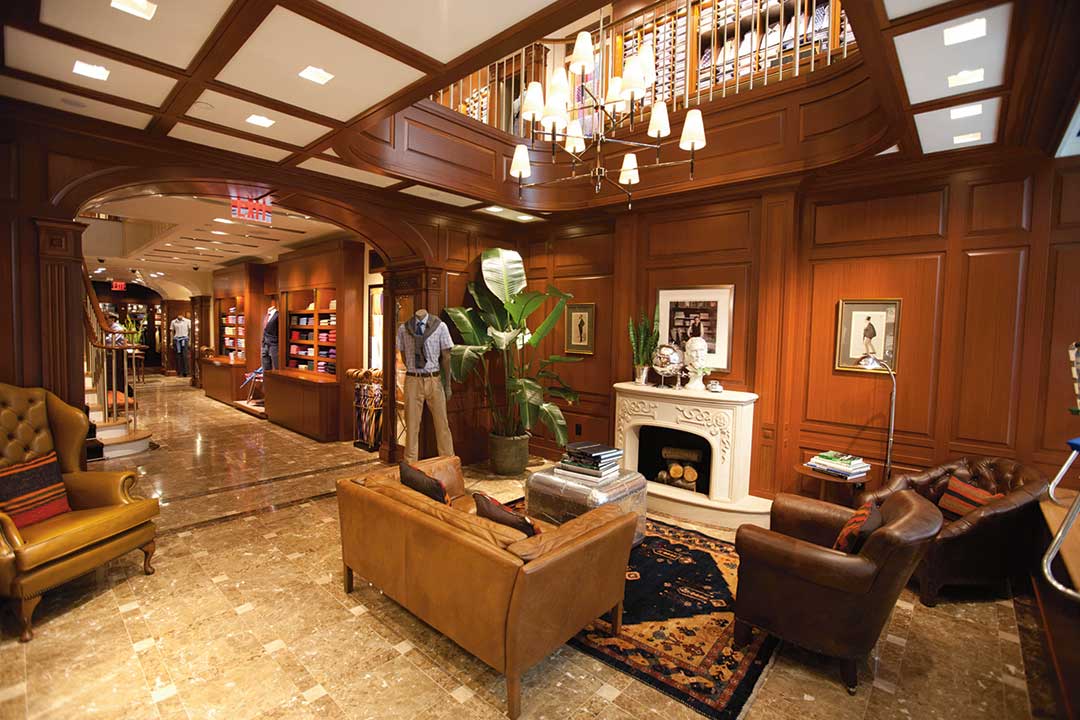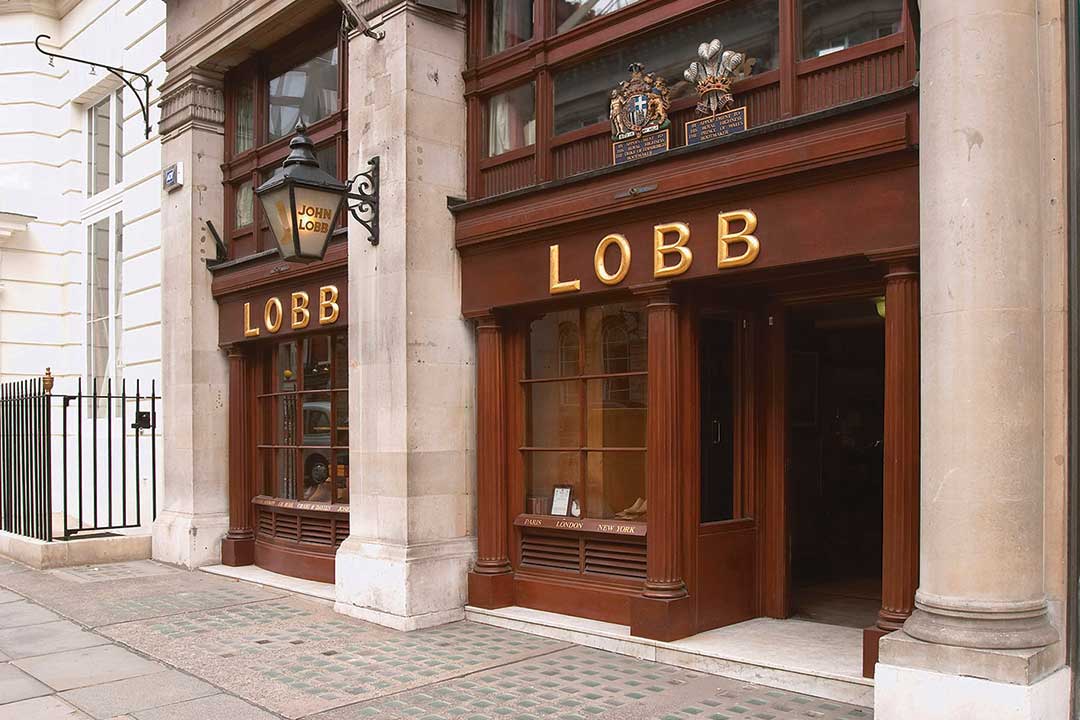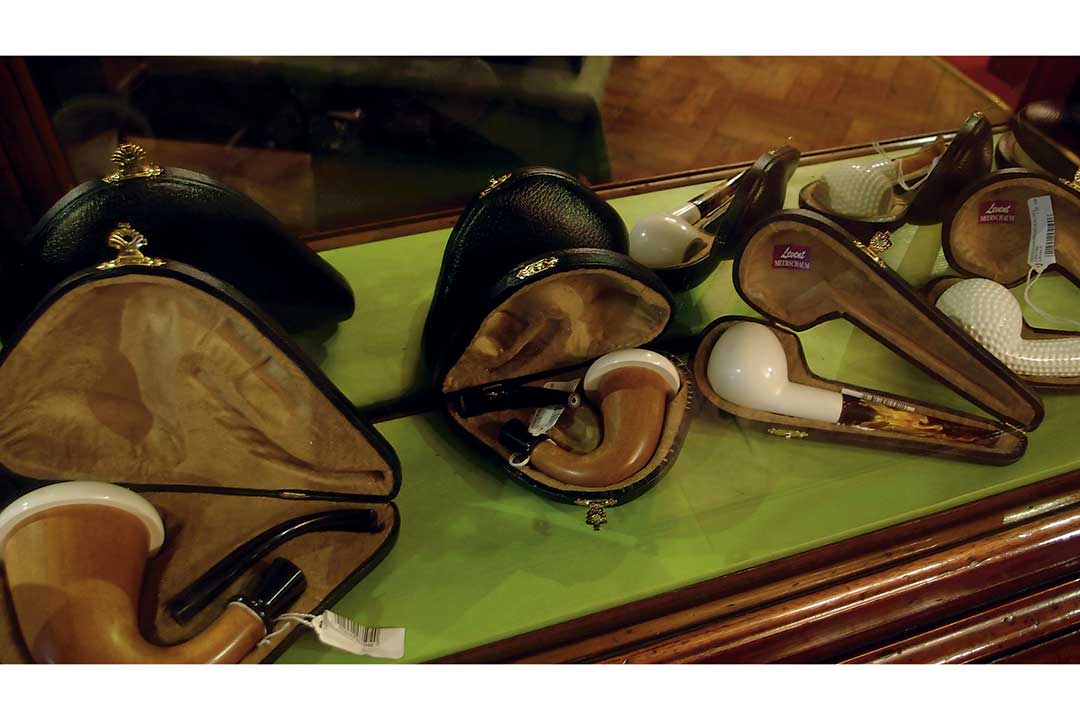A gentleman buys his hats at Lock’s, his shoes at Lobb’s, his shirts at Harvey and Hudson, his suits at Huntsman and his cheese at Paxton & Whitfield, said Winston Churchill on one occasion, mentioning the stores that were only a few minutes apart on foot. Naturally, not accidentally, because all these stores are located in the two streets of the London’s St. James’s, a city quarter that keeps traces of the past centuries, surrounded by royal residences, homes of the noblemen and the higher classes, the famous Ritz hotel, and gentlemen’s clubs, all intended for shopping, entertainment, and leisure. At the same time, St. James’s was the place where the aristocrats gained and lost their wealth, where Lady Caroline Lamp and Lord Byron used to scandalize London, and where Beau Brummell turned clothes into haute coiture.
Today, St. James’s, bordered by the Trafalgar Square, Piccadilly Circus, the Green Park and the Buckingham palace – is a luxurious quarter in the very center of London. Its streets are embellished by nice shop windows offering handmade goods to sophisticated buyers, along with the unparalleled shopping experience. This was invitation enough to walk the streets of St. James’s and discover the stories behind the most interesting shops.
We selected St. James’s Hotel and Club as an ideal starting point. A small number of rooms and a fine balance of Victorian architecture and rich history produced the character and the intimate atmosphere of this institution. The beginnings of this elegant establishment date back to 1857, when English aristocrats Earl Granville Leveson-Gower and Marquis Emanuelle Taparelli d’Adzeglio fell out with the management of the Travelers’ Club and decided to establish their own gentlemen’s club as a place for foreign diplomats to meet. The club already had 300 members before it was even opened, all well-known city dignitaries, but also some world famous people.
The famous Henry James did his research on colloquialisms in the English language in the St. James’s Club, the composer Arthur Sullivan wrote his Savoy Operas, and Winston Churchill often visited the club in the 1930s. During World War ii one could meet Ian Fleming there, the author of James Bond books. Today, the members are famous stars, such as Michael Caine, Jerry Hall, Robert Redford, Richard Attenborough...
There you go, major, get yourself comfortable. How long has it been? Perhaps three weeks ... said the older master barber to his customer, the man close to his age, in the back of the barber shop at 71 St. James’s Street, while he directed the customer to the chair and negotiated a hair cut. It is early morning in the Truefitt & Hill, the oldest barber shop in the world according to the Guinness Book of World Records. Truefitt was founded in 1805, by William Francis Truefitt, the barber to the British Royal Court, as stated in the charter of King George’s iii. Another barber, Edwin Hill, opened his shop in the Old Bond Street nearby, in the London’s Royal quarter. Later, the two master barbers and gentlemen’s hair dressers merged in the company Truefitt & Hill. The barber shop seems centuries-old, but has been at the current address only from 1994, still holding the title of the oldest because of the founding year.

For more than two centuries, Truefitt & Hill have offered to the well-groomed gentlemen the best services and products, both sophisticated and practical. Our goal is to offer a gentlemen a chance to look as best as possible, but also to feel the same. That is why the shave is done with hot foam and razor blades, but we also offer hair-cuts and shoe polishing, said Ola, one of the seven master barbers (three of them women), while she is showing us a whole range of original, Truefitt products, shaving tools and equipment, along with the especially impressive collection of handmade brushes.
Today, Truefitt’s is regularly visited by many members of the British Royal Family, members of other royal families visiting the Buckingham Palace, the best-known businessmen, members of the Parliament, ambassadors and diplomats.Speaking of Truefitt’s, and of the gentlemen who deserve the best, we may as well cross the street and visit Berry Bros. & Rudd at No.3, the oldest British wine trading company, doing business at this address for more than three centuries, and still owned by the family. With two royal documents and eight experts with the title Master of Wine at the service for gentlemen of sophisticated palates and deep pockets, it does not take much effort to offer bottles of the best wines from the entire world.
Still, only a few meters further down the street there is another, even more convincing record keeper – James Lock & Co. It is the oldest hat shop in the world, founded in 1676; it is also one of the oldest family businesses. The story began at the time of the plague and the Great Fire of London in 1666, when the aristocratic families were moving to the western part of the city, to the West End. Many city merchants moved with them, especially those who depended on the well-off customers. One of them was George James Lock, a merchant in the London’s City, who imported coffee, chocolates and tobacco. Successful Lock was selling his goods to the Royal Family living in the St. James’s Palace (Queen Victoria would move to the more comfortable Buckingham Palace only in 1837).
The business was fine until the sixth generation of owners, during the World War ii, as it was the end of the era when no gentleman could go without a hat.
Over the years, the Locks supplied many tens of thousands of customers, requesting the quality and personalized services, many of them famous, such as Admiral Nelson, Winston Churchill, Charlie Chaplin and Elton John. The shop is today a proud owner of Prince of Wales’s charter (Prince Charles), as well as the Duke of Edinburgh’s.
The most beautiful shop in the world! This describes the wood-encased empire of John Lobb, the Bootmaker, also under the protection of the Duke of Edinburgh and the Prince of Wales. Behind this name, there is a manufacturer and a merchant offering luxurious shoes and boots for gentlemen (only some for ladies), founded more than 150 years ago. The shop is located at No. 9, where Lord Byron once enjoyed his bachelor life.
John Lobb, born in the middle of the 19th century, was a peasant’s son from Cornwall, who limped some 420 kilometers from his home to London. There he found work with Master Thomas, the best bootmaker in the city, unaware that this would be the beginning of the most prestigious shoemaking dynasty in the world. At the end of his learning years, he went to Australia at the time of the Gold Rush and supplied boots to gold diggers. A few years later, he won the gold medal at the World Exhibition in London, and sent a pair of boots to the Prince of Wales in 1863. The Prince was so thrilled with John’s skills, that he proclaimed him his personal supplier of shoes and boots. When he returned to London in 1866, he opened his workshop and his store, and became the shoemaker of kings and the king of shoemakers, as he was called.
Our representatives travel for fittings to our regular customers to all four corners of the world, but also to new customers. Most of our customers live in the United States, Europe, especially Germany, Italy and Holland, then in Russia, and the Far Eastern countries, such as Japan and Hong Kong. Our representatives carry along a shoe selection and various leather samples, said the present owner John Hunter Lobb.
At Lobb’s, the shoes are still made on an individual basis; they are a kind of a work of art. Shoes are made according to precise measurements; next maple wood moulds are made and stored in the archives (of more thousand pairs), so that the customer can order an additional pair from anywhere in the world (the representatives occasionally visit them to measure the changes in their feet which may have occurred over years). Each shoe is worked on by eight specialized masters, which justifies the average price of about 3,000 pounds per pair.

Gentlemen, Sir Winston Churchill asked me to express his most sincere gratitude for your efforts to supply him the cigars in the circumstances of present difficult supply. He really felt indebted to you, wrote Churchill’s personal secretary to the suppliers of the finest Cuban cigars in January 1963, during the Cuban Crisis. Five house numbers further down the street from Lobb’s, a sophisticated customer – a hedonist will find a prestigious tobacco shop – J. J. Fox, the oldest cigar shop in the world.
Fox’s story began with Robert Lewis who began selling tobacco in St. James’s Street as early as 1787. A hundred years later (in 1881) he founded his company James J. Fox in Dublin, and the tobacco shop in London in 1947. Then he purchased Robert Lewis’s business, and thus merged the two most famous names in the world of cigars.
Among the 20 Cuban brands, the most popular cigars at Fox’s are Montecristo No.4 and Bolivar Belicosos, while among the Dominicans favorite is Ashton. Besides the regular cigars, the shop offers vintage cigars (at least ten years old), a great selection of pipes, humidors and various smoking accessories. It is interesting that J.J. Fox’s is one of the rare shops in Britain not subject to the smoking ban, so that customers can try the cigars and enjoy the merchandise in the shop.
When discovering St. James’s, you turn into the narrow, one-way Jermyn Street, the second most important street of the neighborhood, and enter the world of men’s fashion. At the very beginning of the street, at Nos. 72–73, there is Turnbull & Asser, famous for their impeccable taste in gentlemen’s clothes since the opening in 1885. Turnbull & Asser are especially known for their shirts and ties; they regularly supply the members of the Royal Family, world leaders, music stars and businessmen.
Every shopping requires a break. Only a block away is Piccadilly, parallel to the Jermyn Street, offering refreshments in the Fortnum & Mason department store, a reputable institution founded in 1707, offering their customers the best goods from all over the world. Fortnum & Mason proudly present their six restaurants, among them the elegant Diamond Jubilee Tea Salon, one of the British icons, opened by the British queen herself. The fans of tradition will enjoy the Salon’s authentic experience of the afternoon tea time with salty and sweet delicacies.
Refreshed thusly, we made a small exception and crossed Piccadilly to step into the Mayfair quarter, only to walk along the Burlington shopping arcade that actually belongs to St. James’s world. The Burlington Arcade, opened in 1819, was actually a forerunner of European shopping galleries from the middle of the 19th century, and of the shopping centers of today. It was build by lord George Cavendish, in his garden, next to his house in Piccadilly, when he got tired of passers-by throwing empty oyster shells and other garbage over the wall into his garden (at the time oysters were the favorite street food).

The Burlington Arcade consists of a passage with natural skylight, and originally 72 smaller, two-storey shops (later many were remodeled, so that there are some 40 shops today). Those used to be jewelry shops, while today these historical arcades offer expensive shops with clothes, shoes, artwork and antiquities, as well as jewelry shops, especially antique silver which made the Arcade famous.
It is interesting that the order in the Burlington Arcade is maintained by the smallest private police in the world – the so-called Beadles. Historically, those dressed up watchmen in traditional Edwardian coats and gold-embellished hats, kept the code of conduct in the Arcade as it was determined by lord Cavendish, including the ban on whistling, singing, playing instruments, running, carrying large packages, or opened umbrellas, banning even baby strollers (most of the rules are still valid today).
Having returned to Jermyn Street, we find Thomas Pink’s store at No. 85, best reflecting the reputation of the Jermyn Street as the cradle of the British shirt making. So, every shirt with Thomas Pink signature is a perfection, made of top quality two-fold cotton (special, double fabric).
The stroll around the St. James’s quarter ended appropriately with the visit to one of the traditional institutions – the cheese store Paxton & Whitfield, one of the most famous in London. This jewel situated at No. 93 has always been the favorite place of the city’s cheese fans and the permanent supplier of many London hotels and top restaurants as well.
The roots of this institution rest neither on Harry Paxton, nor Charles Whitfeld, who gave the store its name, but on Sam Cullen, the cheese merchant who placed his stand at the Aldwych Market in 1742, close to the King’s College. As London grew, Sam decided to move his business closer to rich citizens, to Jermyn Street, where the shop still stands today. In his old age, he closed a partnership deal with Paxton and Whitfield in 1797, so that their names are above the entrance today. The firm’s reputation grew over the years and culminated in 1850, when they became the Royal Supplier of Cheese to Queen Victoria, which they still are.
Somewhat worse times began in the 1860 with the industrial manufacturing of cheese and, more importantly, when the higher classes began losing interest in the English farmers’ cheeses and the taste turned towards the continental kinds. As many milk manufacturers began selling their products to large dairies, many kinds of manufactured cheese slowly ceased to be in demand. This changed the Paxton & Whitfield into a common grocery shop during the World War ii. The shop was rescued after the war by a series of new owners, and the revival of cheese production, so that the company was able to renew their contracts with small dairies all over Britain, at the same time importing the best cheeses from the rest of Europe. In the end, Paxton & Whitfield remained a family business, in close cooperation with the manufacturers, and offering ideally mature cheeses of the highest quality to the immense satisfaction of their customers.
The quality, uniqueness and, above all, the luxury, have always been the principal characteristics of the legendary shops in the St. James’s quarter. Weather one decides to opt for Charlie Chaplin’s (who was a regular customer of these facilities) the saddest thing you could imagine is to get used to luxury, or Oscar Wilde’s (also a fan of the fine goods of St. James’s) luxury is not the opposite of poverty, but the opposite of vulgarity, a stroll down this polygon of sophisticated taste cannot harm anyone.